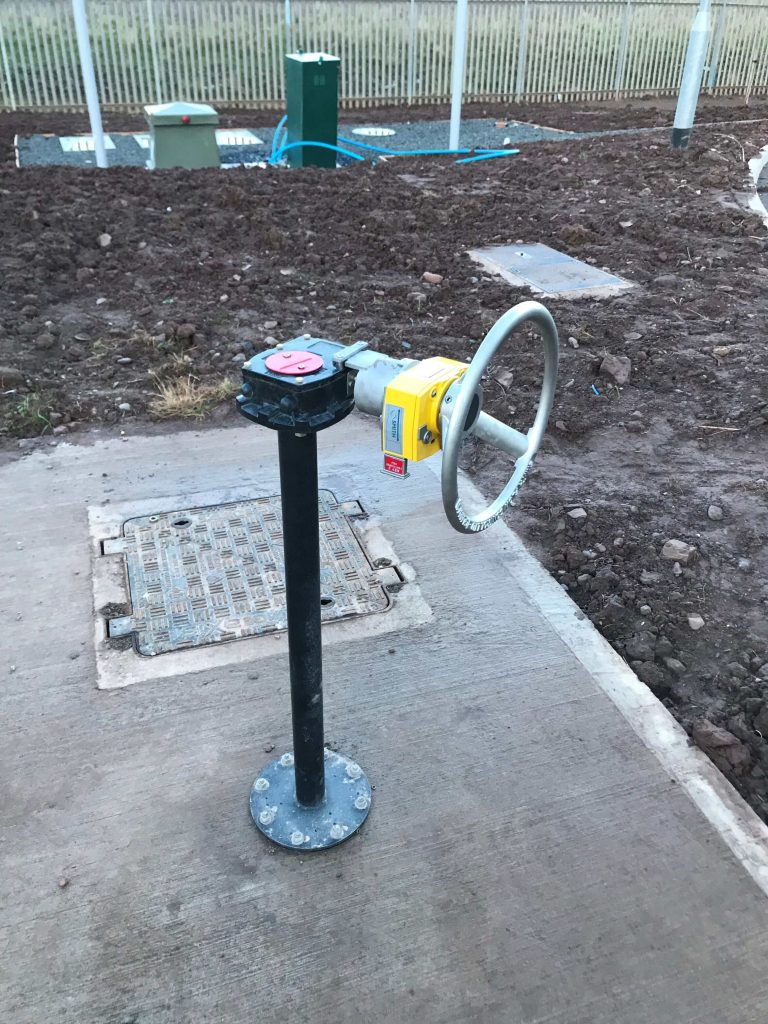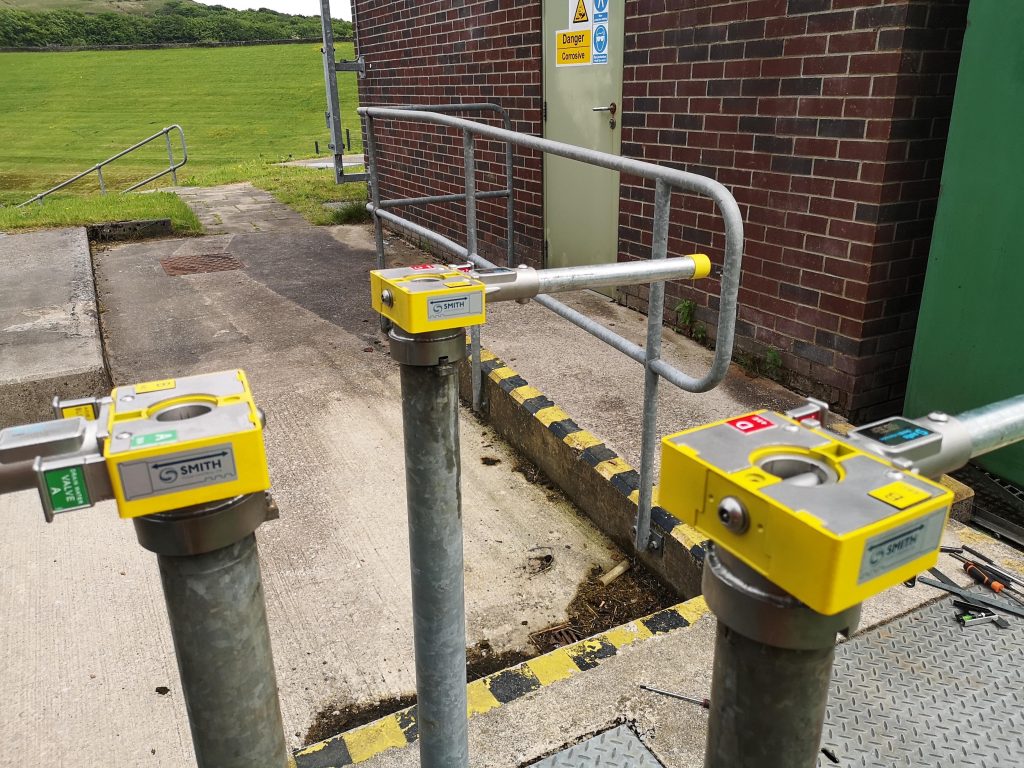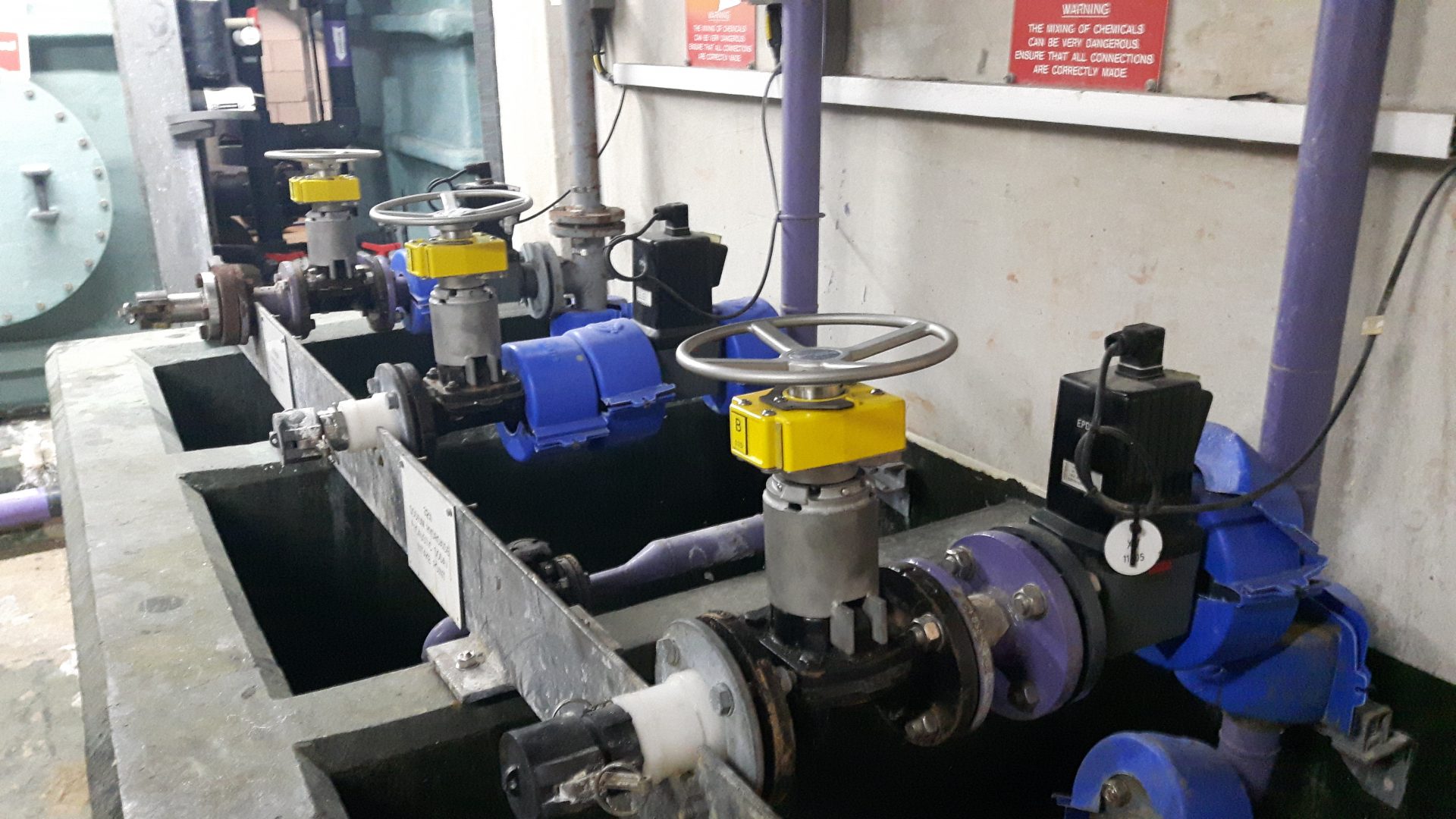At both water and wastewater treatment plants, the chemical offloading process is usually carried out in a set sequence. First, the tanker arrives at the offloading bay, which has a capture bund to ensure any accidental spillage from the process will be contained and safely drained away. Capture bunds typically have two outfall options – to a rainwater drain which goes into the watercourse, or to a chemical capture tank.

Prior to commencing the chemical offloading process, the driver must route the capture bund outfall to the chemical capture tank by closing the valve to the rainwater drain and then opening the valve to the chemical capture tank. This ensures that if there are any spillages during offloading, the harmful chemicals will not flow into the watercourse. Once the valves are in their correct positions, the driver will connect the transfer hose to carry out the offloading process. When offloading is complete, the driver will disconnect the transfer hose and reverse the capture bund flow routing.
Not only is it critical for the driver to ensure that the capture bund flow is routing to the capture tank, but the driver must also guarantee that the offloaded chemical is transferred to the correct fill line. Often there are numerous different tanks, manholes and connections at a water or wastewater treatment plant, therefore the driver must be certain that the transfer hose will be connected to the correct transfer point at the plant, otherwise it could lead to a potentially catastrophic chemical reaction, or accidental routing into a drinking water main.
Hazards of chemical offloading
The Camelford disaster may be Britain’s worst water poisoning event, which occurred as a result of human error during chemical offloading.
A late and rushed driver arrived at a water treatment plant near Camelford in 1988 to deliver 20 tons of aluminium sulphate, which is a common coagulant. When he arrived at the plant, he found multiple tanks and manhole covers in the offloading area. With little instruction from the plant and confused on which tank to empty into, he accidentally transferred the aluminium sulphate to a drinking water line for around 20,000 people in the area. Residents immediately began experiencing ill effects due to the contamination and grew concerned that they had experienced a harmful accumulation of aluminium in their bodies due to this incident. Their concern was only heightened after a resident of Camelford died from a rare neurological disease and upon examination, her brain was found to have a high concentration of aluminium.
While the true effects of the Camelford disaster may never be known, it was fatal for at least one person and caused ill health for many others. A safety mechanical interlocking system could have prevented the driver from offloading to the incorrect fill point, which would have prevented the contamination of the drinking water and its fatal consequences.
The safety of the chemical offloading process depends entirely on the human element of the driver verifying that the rainwater drains and capture tank valves are in the correct positions and ensuring that they are offloading to the correct fill point. The driver is typically guided by written and colour-coordinated instructions, but these control measures still contain the potential for human error. If these checks are not carried out correctly and/or the driver makes a mistake, there is an increased risk of chemicals entering the rainwater watercourse, wrong tank, or even the drinking water main.

Using mechanical interlocks to reduce risk in chemical offloading
At a water or wastewater treatment plant, mechanical interlocks can be utilized to enforce a predetermined valve operation sequence. This sequence ensures that the rainwater drain valve is closed and the chemical capture tank valve is opened before the driver can access the chemical offloading point.
Mechanical interlocks can also be deployed at every tank, manhole and connection point to ensure offloading and transferring of chemicals takes place into the intended line. Mechanical interlocking systems require the driver to obtain the correct system key from a controlled location, such as a control room, control centre, or an electronic key distribution control cabinet. The interlock system keys are uniquely coded to ensure that the key can only operate the intended interlock. The trapped key system ensures the driver can only ever operate the relevant valves and connection points in a predetermined sequence.
Sofis valve interlocks significantly reduce the risk of an incident occurring in offloading operations which could result in a chemical entering the watercourse, an unintended tank, or even the drinking water main.



